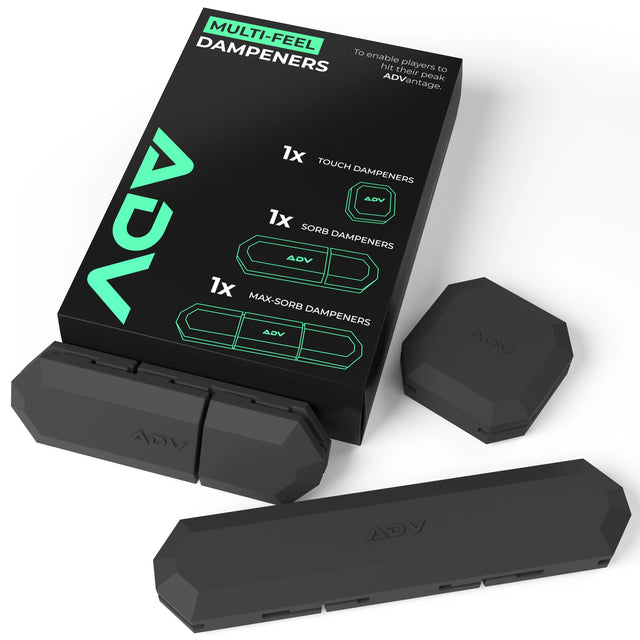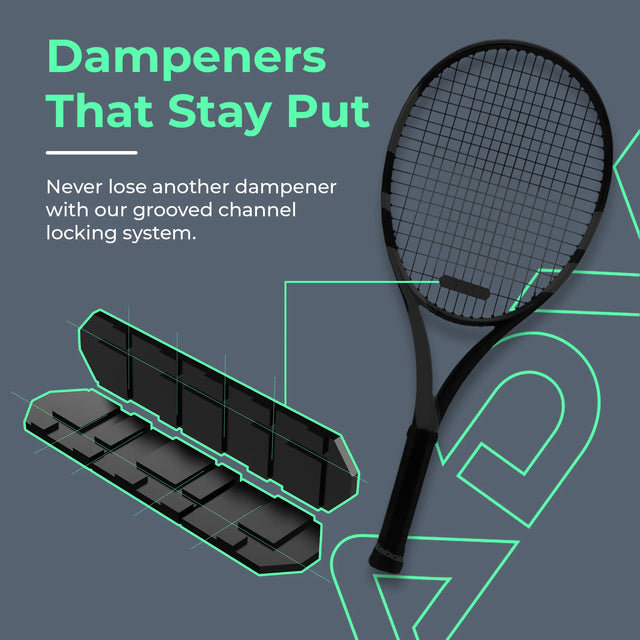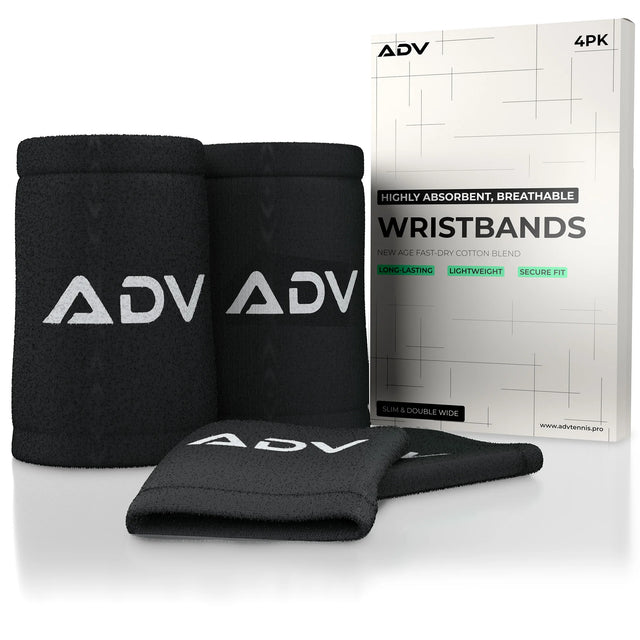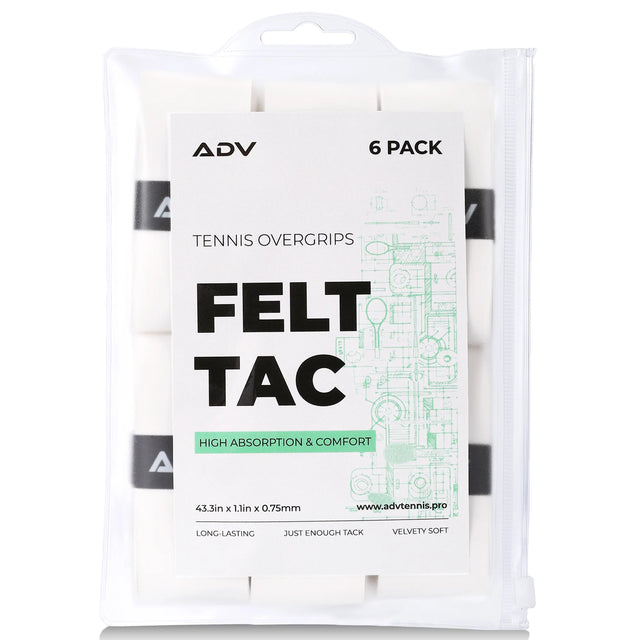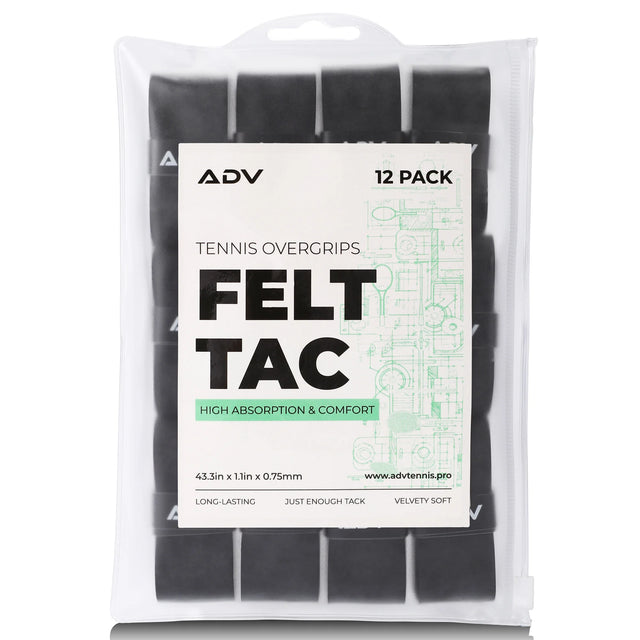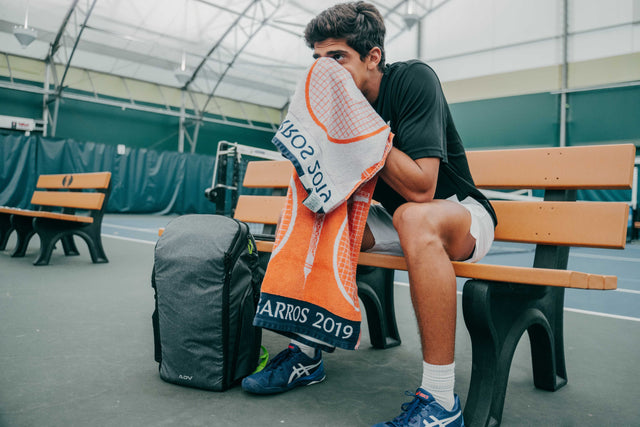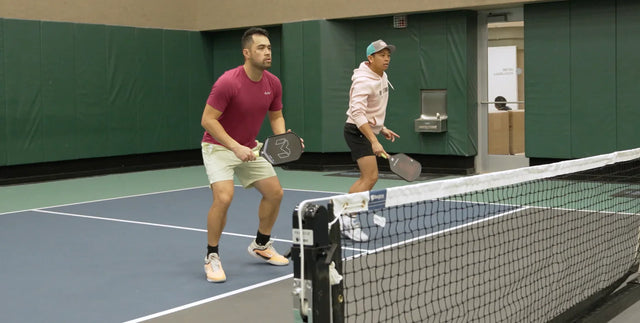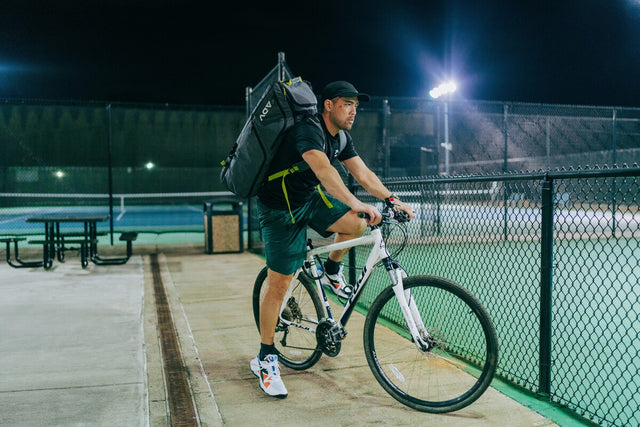Organizing Your Tennis Bag Like a Pro: What to Keep Inside
A meticulously organized tennis bag can significantly boost your performance on the court. By having all necessary items neatly arranged and readily accessible, you can save time and reduce stress during practice or matches. This efficiency lets you focus fully on your game rather than scrambling to find your gear. Whether it's quickly grabbing a new tennis overgrip during a crucial match or effortlessly accessing a water bottle, a well-planned bag setup ensures everything you need is at your fingertips. This organizational strategy streamlines your preparation and helps maintain your concentration and composure, key aspects of a successful tennis player.
Tennis Bag Essentials: What to Keep Inside
Must-Have Tennis Accessories for Every Player
This includes the basics like rackets and balls and items that support performance and comfort. A good tennis bag should always contain fresh overgrips, a selection of dampeners, and wristbands to help manage sweat and maintain grip. Additionally, a well-prepared bag includes first aid supplies such as plasters and anti-inflammatory gel, ensuring that minor injuries can be managed immediately.

Choosing the Right Number of Rackets and Spare Strings
Most players benefit from having at least two rackets in their tennis bag to ensure they have a backup in case of string breakage during a match. Alongside the rackets, it's wise to include a set of spare strings and tools necessary for quick repairs. Preparedness allows for immediate response to equipment issues without significant disruption to your game, keeping you competitive and focused.
Hydration and Nutrition
Maintaining hydration and energy levels is vital during matches and training sessions. Your tennis bag should always include a durable water bottle and a selection of energy-boosting snacks such as protein bars or fruit. These nutritional essentials are crucial for sustaining energy, concentration, and overall performance. Packing various snacks caters to different energy needs throughout the day, ensuring you remain hydrated and energized from the first serve to the last point.
Extra Tennis Overgrips, Dampeners, and Wristbands
To maintain optimal comfort and control over your racket, it's important to make use of tennis dampeners and regularly replace overgrips. Overgrips provide a fresh, tacky feel and improve the handling of your racket, especially under sweaty conditions. Dampeners reduce racket vibrations upon impact, which can help prevent arm strain and improve shot precision. Including extra wristbands in your bag also aids in managing sweat, which can enhance grip and comfort during intense play.
Travel-Friendly Packing Tips for Tournament Players
How to Pack a Tennis Bag for Maximum Efficiency
Arranging Heavier Items at the Bottom
It's crucial to start by placing heavier items, such as cans of tennis balls and extra shoes, at the bottom. This arrangement ensures the bag remains stable and balanced, preventing it from tipping over and making it easier to carry. Keeping the weight evenly distributed at the base protects more delicate items like rackets from undue pressure or damage, which could occur if heavier objects were placed on top of them during transport.
Using Pockets and Compartments
Utilizing these features effectively can significantly enhance your packing efficiency. Designate specific compartments for different types of gear: small pockets for tennis dampeners, separate compartments for clean and used apparel, and insulated sections for hydration bottles. This method secures your items in place and makes it easier to find exactly what you need without rummaging through your bag.
Keeping Frequently Used Items Within Easy Reach
To optimize your tennis bag organization, position the items you use most frequently in the most accessible spots. This typically includes your primary racket and a towel. Having these essentials at hand simplifies switching gears between games or during practice breaks, allowing for a smoother and more focused tennis experience. Strategic placement ensures that you can quickly adapt to any situation on the court without unnecessary delays.
Travel-Friendly Packing Tips for Tournament Players
Traveling for tournaments requires carefully considering what and how you pack to ensure you remain prepared and compliant with travel regulations. Here’s a comprehensive approach:
- Use a Compliant Bag Size: One of the most critical aspects of traveling for tournaments is ensuring that your luggage meets airline size and weight restrictions. Airlines have varying rules for carry-ons and checked bags, and exceeding these limits can lead to extra fees or forced repacking at the airport. Tournament players should research airline policies in advance and choose a bag that complies with size requirements while providing ample storage. Opting for a compact, durable tennis bag with multiple compartments can help maximize space without exceeding weight restrictions. For those traveling with various rackets, checking with the airline about whether they are sports equipment is crucial to avoid last-minute surprises.
- Pack Multipurpose Clothing: Choosing apparel that transitions seamlessly from the court to casual settings helps minimize the number of items needed. Lightweight, moisture-wicking fabrics work well for both training and leisure activities, keeping players comfortable throughout their trip. Neutral-colored pieces that can be mixed and matched make it easier to create multiple outfits without overpacking. Many tennis brands offer performance wear that looks stylish enough for post-match outings, eliminating the need for separate casual wear. Also, layering options like zip-up jackets or athletic pullovers provide adaptability for varying temperatures without taking up too much space.
- Roll Clothing to Save Space: This technique is especially useful for tournament players who need to fit a variety of gear, including sportswear, warm-up outfits, and casual clothing, into a limited bag size. Rolling also makes it easier to see all packed items at a glance, preventing the need to dig through a disorganized suitcase. Compression packing cubes can further enhance this method by keeping rolled garments neatly contained and maximizing luggage capacity. By implementing this space-saving approach, players can fit all their tournament essentials while ensuring their gear remains well-organized and easy to unpack upon arrival.
- Secure Rackets Properly: Using a dedicated racket compartment in a specialized tennis bag offers the best protection, preventing unnecessary movement during transit. If a tennis bag lacks built-in racket protection, wrapping rackets in clothing or padding them with towels can provide an added layer of security. Placing rackets in the center of the bag, surrounded by soft items, minimizes the risk of impact damage. Players flying to tournaments should also check airline policies on carrying rackets in overhead bins versus checking them with luggage. Some professional players opt for hard-shell cases to ensure maximum safety, especially for long-haul travel. Taking these precautions helps maintain racket integrity, ensuring players arrive at their destination ready to compete without equipment issues.
- Optimize for Security Checks: Keeping items like liquids, gels, and electronics in easily accessible compartments allows for quick removal when passing through screening. Players should pack their carry-on strategically, placing frequently screened items at the top for convenience. Travel-sized toiletries that comply with TSA regulations prevent the need for last-minute repacking. If traveling with protein powders, supplements, or energy bars, keeping them in their original packaging is best to avoid additional scrutiny.
Players can enjoy a hassle-free journey by selecting the right luggage, organizing gear effectively, and anticipating travel regulations. Thoughtful preparation makes traveling for competitions more manageable, enabling players to stay comfortable, organized, and ready to perform at their best.

Smart Storage Solutions for Tennis Gear
Ways to Organize Tennis Gear for Quick Access
Labeling compartments can be a game-changer. For instance, dedicating a specific pocket for sweaty clothes and another for fresh apparel ensures hygiene and efficiency. Using gear organizers within your bag can help segregate small items, which are prone to getting lost among more significant items.
Ventilated Sections
Integrating ventilated sections into your tennis bag for storing shoes and worn clothing can significantly enhance the freshness and usability of your gear. These allow for air circulation, which helps to dry out moisture and reduce the buildup of unpleasant odors and bacteria. Especially after long matches, having a place where your gear can air out is essential for maintaining good hygiene and comfort.
Waterproof and Shock-Resistant Features
Ensuring your tennis gear storage remains in top condition regardless of the weather or travel conditions involves using one equipped with waterproof and shock-resistant features. Here’s how these features serve crucial protective roles:
- Waterproof Fabric: One of the most essential protective elements of a tennis bag is its fabric. Choosing a bag made from waterproof or water-resistant materials helps safeguard gear against rain, humidity, and accidental spills. High-quality materials like coated nylon, TPU (thermoplastic polyurethane), or PVC-treated polyester create a barrier that prevents moisture from seeping into the bag. This is significant for storing extra clothes, towels, and electronic devices such as fitness trackers or smartwatches. High-end tennis bags also include an inner lining for further water protection, ensuring that sensitive equipment remains dry even in extreme conditions.
- Sealed Zippers: Even the most water-resistant fabric can be ineffective if the bag's zippers allow moisture to seep in. Sealed or rubberized zippers are a crucial addition to any high-quality tennis bag. Standard zippers often have small openings that can let in water, especially during heavy rain or accidental liquid exposure. Sealed zippers, however, come with protective coatings that prevent moisture from penetrating the bag's interior. Some designs even feature storm flaps—extra layers of material covering the zipper—to provide additional protection.
- Reinforced Bottom: Without proper reinforcement, constant contact with rough surfaces like concrete or gravel can lead to fabric tears, structural weakening, or water seeping into the bag. Many high-quality bags incorporate rubberized, double-stitched, or rigid panel reinforcements at the base to withstand frequent placement on various surfaces. This feature is particularly useful for players who travel frequently or store their bags in locker rooms, where exposure to damp floors or rough surfaces is common.
Travel-friendly tennis bags with waterproof and shock-resistant features ensure that players can focus on their game without worrying about gear damage or exposure to harsh conditions. Investing in a bag that combines durability with protective elements is a smart choice for any serious player, ensuring their equipment remains safe, secure, and ready for action.
Maintaining Your Tennis Bag for Long-Lasting Use
Tennis Bag Maintenance Tips
Start by routinely cleaning the exterior and interior with appropriate cleaners for the bag's material. For fabric bags, use a gentle detergent and a soft brush to remove dirt and stains without damaging the fibers. Leather bags require special leather conditioners to keep them supple and prevent cracking. Ensure the bag is completely dry before storing it to avoid mold and mildew growth, which can degrade materials and cause unpleasant odors.
How to Protect Tennis Gear
After each match or practice session, inspect your gear for signs of damage, such as cracks in rackets or tears in grips, and replace these items promptly. As mentioned previously, utilizing racket covers and cushioned inserts can also prevent damage from accidental impacts or pressure when the bag is overly packed or mishandled during travel.
Periodic Bag Check
Periodically emptying and reorganizing your tennis bag is another essential maintenance practice. This helps to lighten your load and allows you to evaluate what items are necessary and which are not. Removing unnecessary items reduces clutter, which can contribute to disorganization and even damage to essential gear by preventing items from being crushed or bent. This regular audit ensures that everything in your bag is functional and ready to go for your next game.
Upgrading to a Professional Tennis Bag
A professional-grade bag offers enhanced durability, better organizational compartments, and specialized features suited to the rigorous demands of frequent play and travel. Investing in such a bag can significantly improve your game-day experience by ensuring that your gear is always in top condition and organized to best support your playing needs.
Choosing the Best Tennis Bag for Your Needs
Comparing Men’s Tennis Bags
The ideal bag not only matches your personal aesthetic but also meets your specific functional needs. Look for designs that offer sufficient space for all your gear and adequate storage for accessories and personal items. Also, consider the comfort of the carry system; padded straps and back support can significantly affect how the bag feels, especially when it's fully loaded.
Racket Bags for Tennis Players
Racket bags come in various sizes, typically designed to accommodate between 3 to 12 rackets. For regular players, a mid-size bag is often sufficient, providing space for rackets, balls, clothing, and hydration without being too bulky. For tournament players who need more gear, larger bags with dedicated compartments for each type of equipment are preferable.

Mastering the tennis bag checklist can significantly enhance your performance and overall enjoyment of the game. This efficiency prevents distractions caused by missing or misplaced gear and reduces downtime during play, allowing you to maintain mental and physical momentum. Furthermore, the confidence that comes from knowing you are fully prepared with all your essentials can be a psychological advantage, keeping you calm and focused in competitive situations.


